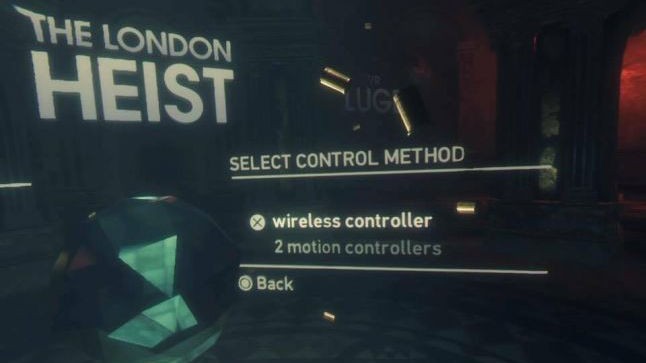How tech is making virtual reality more accessible
Immersive VR experiences can aid rehabilitation as well as offering entertainment
Although the combination of tech solutions and virtual reality sounds promising, for many it still feels like we're a long way off from the experiences living up to our expectations, and reaching the level of immersion experienced by non-disabled people.
Shannon Garcia told us that there are many barriers to entry for people with disability, including cost. “Unfortunately price will always be a barrier to widespread adoption of more sophisticated accessibility options,” she says.
“As VR-capable devices become more affordable, this will be less of a barrier. Projects developed for mobile-centric platforms like Daydream are going to play a big role, even if they're lower visual quality, simply because more disabled people will have access to them.”
Shaping the culture
As well as price, there are a number of concerns that also impact on the experience of disabled people and non-disabled people alike, such as motion sickness and harassment.
Garcia explains: “The ultimate success of VR social environments as accessible public spaces is going to be be highly dependent on the degree to which developers take responsibility for shaping the culture and ethics of the shared spaces they create.”
As you’d expect, Virtual Reality presents a big challenge for people who live with any form of visual impairment, as so much of the consumer VR experience is based on sight.
Shaun Cheeseman, Director and Accessibility Expert, explains: “Virtual reality will always be a stumbling block for people with sight issues, because you put on a headset and need to be able to see everything around you, and what’s going on, to feel fully immersed.
Sign up for breaking news, reviews, opinion, top tech deals, and more.

“Yes, things could be made bigger so more people can see it, but that also has a detrimental effect on people with the disability, and will only ever enable them to play a game for short periods of time.”
The Beacon Centre Tech Forum has been testing VR headsets and handsets with people who live with a range of sight-loss conditions. Nick Comley, who runs the forum says: “We've discovered that the lack of fine adjustment to the lens headsets is a barrier to making the most of what sight someone has available to benefit from the immersive experience of VR.
“It would be great if lenses adjusted to overcome central or peripheral sight loss to deliver a real 3D experience for people with a wide range of conditions.”
The challenge of movement
Another important consideration is movement. “We're hopeful for virtual eeality, but it's still relatively new and very inaccessible to many gamers,” Steve Spohn says. “If you have a severe physical disability, you aren't able to move in the ways that developers intend you to move to play the games.”
From the restrictions of a tethered device, through to games and experiences that require a certain level of movement to be played effectively, there are a lot of challenges that developers need to overcome.
Spohn adds: “For many VR games you have to be able to rotate in a circle, to be able to duck and lean, and use both arms. Even sitting in a wheelchair with full upper body mobility can be a problem, because you're not sitting at the height developers made the game for.”
Why it’s still too early to tell
VR is still in its infancy, so it’s difficult to tell whether it will live up to its promise for users both with and without disabilities. What’s clearly required is a joined-up approach between hardware manufacturers and developers, as well as an understanding of what it takes to design games and experiences for people living with disability.
Like most experts working within this space, Spohn believes the answer is variety. “Make your games as flexible as possible, and make the platform as open as possible so that software developers can include accessibility easily,” he says.
Accessibility Specialist Ian Hamilton agrees. “People are different, different in both abilities and preferences,” he says. “So don't make assumptions about what people can do, don't assume they have two arms and hands and legs, all in full working order, don't rely on a single novel input method.

“Instead, just offer up as many options as you can. Every extra option is another way in for another group of people.
“Many people with disabilities are justifiably afraid of new developments like these, seeing them as another way that they'll be forgotten in the excitement, and designed out of taking part in society and culture. But with the right design considerations these new ways in can be a huge accessibility enabler, instead of an accessibility barrier.”
Spohn adds: “Virtual reality has some amazing potential, but it also has the ability to crush the souls of those people hoping for new virtual lives.”
“If we proceed with caution, learn how to conquer the obstacles of inaccessibility, and work together to create experiences accessible to a diverse and wide-ranging population of people with varying disabilities, virtual reality has a real chance to become one of the greatest things ever invented.”

Becca is a contributor to TechRadar, a freelance journalist and author. She’s been writing about consumer tech and popular science for more than ten years, covering all kinds of topics, including why robots have eyes and whether we’ll experience the overview effect one day. She’s particularly interested in VR/AR, wearables, digital health, space tech and chatting to experts and academics about the future. She’s contributed to TechRadar, T3, Wired, New Scientist, The Guardian, Inverse and many more. Her first book, Screen Time, came out in January 2021 with Bonnier Books. She loves science-fiction, brutalist architecture, and spending too much time floating through space in virtual reality.